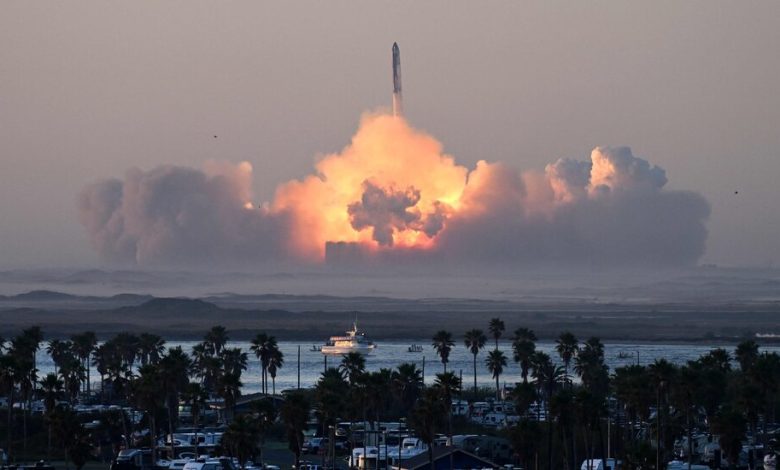SpaceX Makes Progress in 2nd Launch of Giant Moon and Mars Rocket

SpaceX, Elon Musk’s spaceflight company, launched its Starship rocket from the coast of South Texas on Saturday, a mammoth vehicle that could alter the future of space transportation and help NASA return astronauts to the moon.
Saturday’s flight of Starship, a powerful vehicle designed to carry NASA astronauts to the moon, was not a complete success. SpaceX did not achieve the test launch’s ultimate objective — a partial trip around the world ending in a splashdown in the Pacific Ocean.
But the test flight, the vehicle’s second, did show that the company had fixed key issues that arose during the earlier test operation in April. All 33 engines in the vehicle’s lower booster stage fired, and the rocket made it through stage separation — when the booster falls away and the six engines of the upper stage light up to carry the vehicle to space.
“Just beautiful,” John Insprucker, a SpaceX engineer and live launch commentator, said on the SpaceX webcast.
We are having trouble retrieving the article content.
Please enable JavaScript in your browser settings.
We are confirming your access to this article, this will take just a moment. However, if you are using Reader mode please log in, subscribe, or exit Reader mode since we are unable to verify access in that state.
Confirming article access.
If you are a subscriber, please log in.
